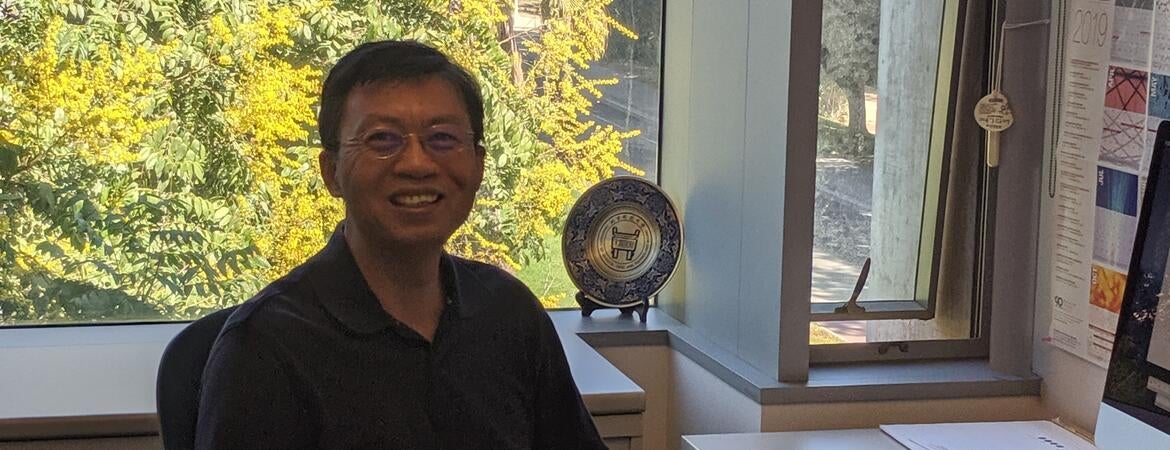An interdisciplinary effort to find better ways for discovering materials for gas separation and energy storage using physics-based models and big data analytics is underway at the University of California, Riverside.
Jianzhong Wu, a professor of chemical and environmental engineering in the Marlan and Rosemary Bourns College of Engineering and a cooperating faculty member in the mathematics department, is leading the project, which received $1.8 million from the National Science Foundation’s Big Ideas program. In addition to those at UC Riverside, the funding will support team members at the University of Idaho, University of Maryland, University of South Carolina, and Binghamton University.
Discovering materials with desired properties has been a perennial human pursuit and is fundamental to many industrial applications. This NSF project intends to address two major engineering challenges, each related to multibillion-dollar industries: discovering novel porous materials for gas separation and ceramic electrolyte materials for high-performance lithium ion batteries.
Pure chemicals don’t just pop into existence. They are either purified from natural resources or made by combining chemicals through reactions. In the latter case, the new chemical has to be separated from reactants and byproducts, a process that can be as simple as spinning it in a centrifuge or a convoluted, energy-intensive sequence of many different steps. Efficient separation of chemical types is important in a broad range of industrial processes and has enormous economic and environmental impact.
Recent developments in machine learning open up a new world for materials design. The combined physics and data analytics approach already has practical applications in other areas, such as autonomous cars, but has not yet been used to design new materials.
“Usually discovering new materials involves trial and error,” Wu said. “Using big data, we can design materials such that they meet specific requirements.”
Physics-based computational research and data science are complementary but progressed almost in parallel until very recently.
“Chemical space is literally infinity,” Wu said. “That’s why they want someone like me who can develop physics-based models that can predict materials performance and amplify the experimental data.”
Big Ideas brings together scientists from different disciplines to tackle 10 bold, long-term research and process ideas at the frontiers of science and engineering. The UC Riverside-led project contributes to “Harnessing the Data Revolution”, or HDR, allowing community inputs to define the research agenda and enable new modes of data-driven discovery.
To get the funding, Wu submitted a preproposal and was one of about 100 scientists invited to a workshop in Washington, D.C. The scientists were divided into groups, each mentored by a coach as they came up with novel ideas. After presenting their ideas to a panel of judges and writing a white paper, a few teams were invited to submit full proposals for funding.
“This is a change in direction for engineering research,” Wu said. “It’s different from my usual NSF grants.”
After a process of development lasting about two years, the project will move forward to compete for $20 million in NSF funding to create institutes to continue the research. The HDR Institutes will eventually bring together multiple science and engineering communities, as well as computer and computational scientists, mathematicians, statisticians, and information scientists, around common data science approaches.





